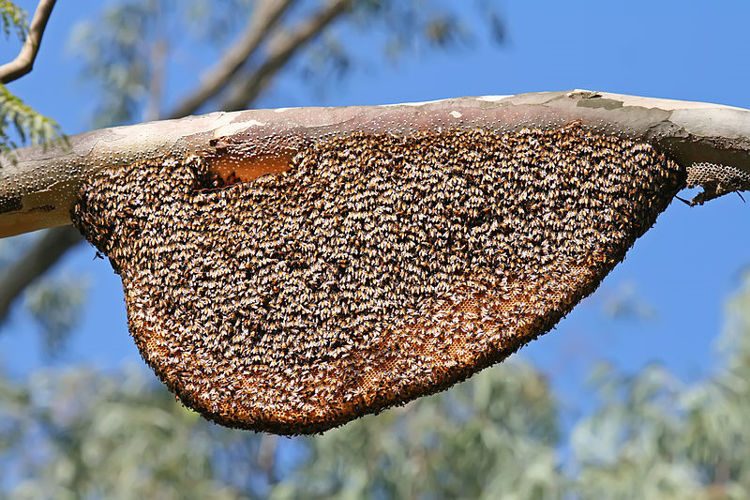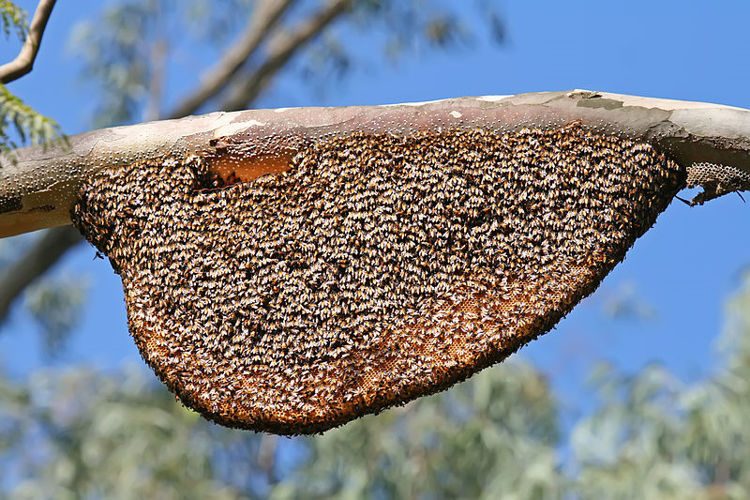The giant honeybees of East Asia can build impressive open nests measuring a few meters across. The fact that they are always exposed makes them vulnerable to predators, particularly large wasps and hornets that love nothing more than invading hives and stealing grubs. Luckily, the bees have a secret weapon that is as visually mesmerizing as it is effective.
Called shimmering, the unique defensive strategy of giant honeybees involves large numbers of workers raising their rear-ends by ninety degrees and shaking them in unison, creating an effect similar to the well-known Mexican waves seen at stadiums across the world. How hundreds of bees are capable of communicating and producing this highly coordinated response to threats remains unknown, but after 15 years of studying the behavior in the wild, scientists are now convinced that shimmering is a defense mechanism.

Photo: Wikimedia CH (GFDL 1.2)
Naturalists have long assumed that the Mexican wave-like patterns observed on living “bee curtains” in the forests of East Asia were meant to keep predators at bay, but the first conclusive proof came a decade ago, when a team of researchers led by Gerald Kastberger from the University of Graz, in Austria, published a study after 15 years of observing giant honeybees in India and Nepal.
After analyzing videos of shimmering colonies of giant honeybees, Kasterberger and his colleagues concluded that there two types of shimmering – small-scale ones that only involved under a dozen bees and large-scale ones that covered the entire surface of the hive. Small scale shimmering occurred frequently, while the large-scale ones only happened when there were wasps nearby.
Scientists noted that the intensity and frequency of the shimmering increased the closer predators got to the giant honeybee hive, and that the moment it began, nearby wasps or hornets halted their attack and fled. The more bees took part in the mesmerizing Mexican waves, the faster the predators retreated.
While it’s still not clear how the shimmering of giant honeybees affects invading wasps, in his study Gerald Kastberger suggests that small-scale waves confuses attackers, making it difficult for them to focus on any one bee, while large-scale shimmering actually threaten them.
Interestingly, large-scale shimmering was observed only when wasps or hornets breached a 50cm safe-zone around the honeybee’s hive. They could hover outside this perimeter without triggering the defense mechanism, but as soon as they crossed it, the Mexican waves began.
Shimmering seems to be used solely as a defense against wasps and hornets, while larger threats trigger a different response. For example, in one experiment, giant bees deployed hundreds of defenders when a kite appeared within 20 meters of the bee’s hive.
Shimmering is not full-proof, but if any wasp or hornet decides to land on the hive, giant honeybees have another trick up their sleeve. It’s called “snow balling” and it involves a group of bees surrounding the intruder and vibrating their wing muscles in unison. This heats the bees’ bodies to 45C, a temperature that is harmless to them but lethal to wasps. Basically, they cook the intruder alive.













